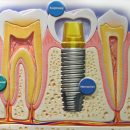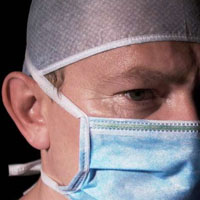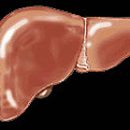One of the most reliable assistants of the doctor in setting the correct diagnosis is magnetic resonance tomography (MRI). Despite the rather long use of this method, patients still have some negative attitude towards this kind «inventions». Our site offers to figure out both in the study itself, so in its testimony, contraindications and side effects that people are so afraid.
What is MRI
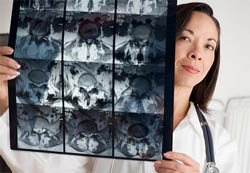
We will not deepen into the structure of the device, and consider the most important points. To compare MRI with a better method - ultrasonic diagnostic - the fundamental difference is that in the first image, the electromagnetic response of the hydrogen nuclei is used, and ultrasonic waves are essentially reflected from the tissues and gets back to the sensor. This is the most important difference: each human body structure has its own number of hydrogen atoms, which, when founding the body in a magnetic field, give a clear image.
Replace MRI today is almost impossible, especially considering the complete absence of X-ray radiation and, as a result, harmlessness for the human body. At least, no negative consequences after this diagnostic procedure are registered.
Most often with the help of magnetic resonance tomography, the structures of the head and spinal costers, joints, less often - internal organs. Consequently, if we talk about the sectors of medicine, in which MRI is used most often, the first place will be separated by traumatology, neurology and neurosurgery. In second place - Pediatrics. In a separate category, people with non-refined diagnoses in the border state, when other research methods turn out to be less informative and longer, as well as various «Sophisticated» Diseases requiring an accurate assessment.
Contraindications
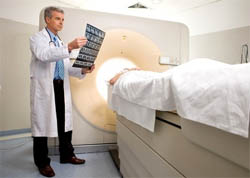
In view of the characteristics of the structure of MRI devices in some cases, this type of diagnostics becomes impossible:
- The presence in the body of the studied any ferromagnetic structures, T. E. Any metallic «Objects», which can be magnified. How do they fall into the body? Everything is very and very simple: installation of the plate on bone fragments and its fixation with special screws, Dental implants or prostheses, implants in other parts of the body ... Even tattoos containing heavy metals are the strictest contraindication to the conduct of MRI;
- The previously installed pacemaker, the work of which can also disrupt magnetic waves, and T. D.
Simply put, if a person had any interventions, it is important to find out, with the use of which metals this intervention was conducted.
I wonder what happens if you still put a patient with ferromagnetic elements in the body of an MRI apparatus? I will answer simple: nothing good, because from the very moment the device is turned on these elements «Try» leave the body with the shortest way.
Fortunately, in most areas of medicine, a titanium has long been used - absolutely inert metal, which will not change its location in the study. But this does not apply to titanium compounds and its obscenes.
In fact, there are not many absolute contraindications to the MRI, but the readers of MirSotov should be known that there are still relative. The difference consists either in an insufficient study of the influence of the diagnostic procedure per person, or in compliance with certain conditions during manipulation, or in weighing all «per» and «against», When it comes to a person's life.
So, to relative contraindications can be attributed:
- pregnancy. Anyway, MRI is definitely not «harmful» computed tomography or x-ray research;
- Some types of implants, in the manufacture of which it is possible to enter ferromagnetic metals;
- severe conditions in which non-unite monitoring of the vital functions of the body is required;
- claustrophobia. At the beginning of the article, I did not mention the form of an MRI apparatus: this is a small horizontal camera with a doctor's doctor at a patient or camera.
Why MRI stands expensive?
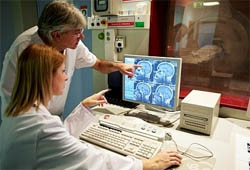
Yes, in most cases, the MRI pays the patient himself.
The high cost of the study is determined not only by the demand of the method among the population and doctors, but also high informativeness consisting in complex structure and operation. Many insurance companies paying treatment for the policy of OMS (compulsory medical insurance) simply refuse to reimburse the value of the MRI carried out, arguing this as a whole list of research, through which it was possible to raise the correct diagnosis and assign treatment. So doctors are found «With knitted hands» - to convey to agents the meaning of emergency diagnostic manipulation is not possible.
Often the choice is not so great. MRI allows neurologists to literally look into the head of a person without opening the cranial box. With the introduction of contrast (most often gadolinium) the necessary arteries «highlighted» and allow cardiac surgeons the most complex manipulations already on the open heart. Or allow oncologists with accuracy to determine not only the size of the tumor and detect metastases, but also give hope to the patient.
We cannot exclude the possibility that in the future doctors and scientists investigate the effect of magnetic waves on the body and prohibit the use of MRI. May turn out and on the contrary. But, as my patients say, would like to live until tomorrow, what «someday»..

